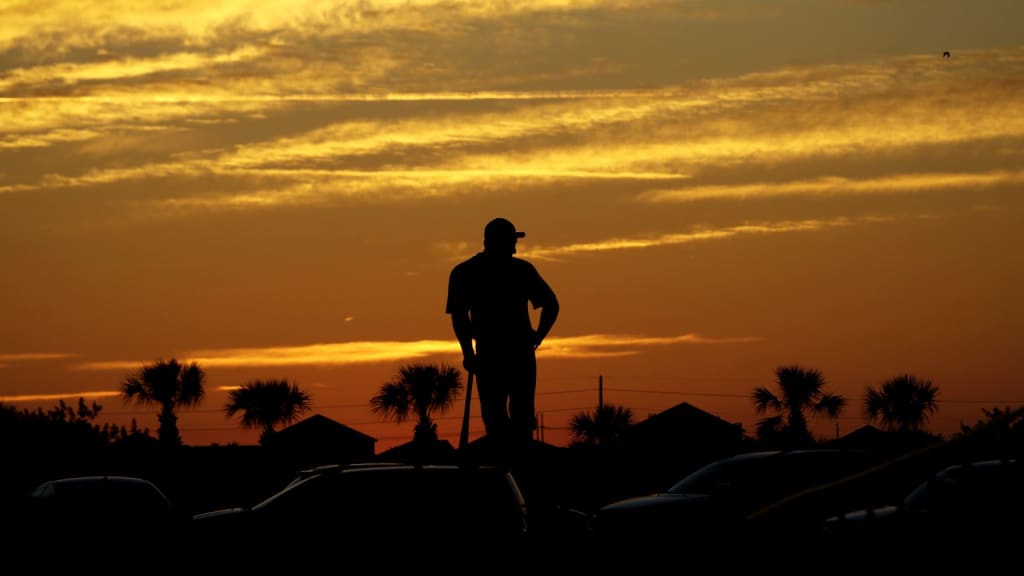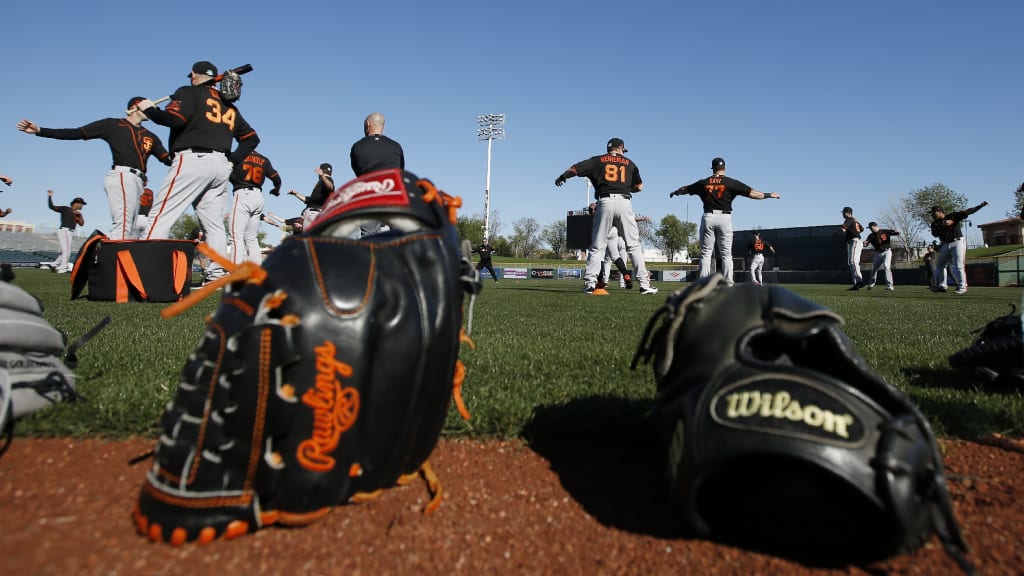
The question hums in the background all winter, growing louder and louder as the cold begins to thaw: How many days until pitchers and catchers report? Yes, it's a bit of a tease, and yes, we still have another week until we can watch actual games, but still: It's a rite of spring, like the flowers blooming or being able to see the sun after 5 p.m., and it's the first sign that baseball is around the corner.
All that excitement, however, masks an equally important question: Just why do pitchers and catchers report early to Spring Training anyway?

When the tradition of Spring Training actually began is a matter of some debate. Some say it started in 1886, when Cap Anson brought his Chicago White Stockings to Hot Springs, Ark., to give the squad a chance to get outside and train for the upcoming season in warmer weather (and, uh, to "boil out the alcoholic microbes in the hard-living players"). Others point to 1888, when the Nationals headed to Jacksonville, Fla., for preseason camp.
But no matter which date you prefer, it was more or less here to stay by the turn of the 20th century. Just about every Major League team was heading south for the spring, some to more unusual locations than others. And when they did, they sent their pitchers and catchers down first: The earliest mention of the practice comes from a story in the March 3, 1905 issue of the New York Times, in which the New York Highlanders (later to become the New York Yankees) had six pitchers and one catcher report to Montgomery, Ala., before the rest of the team. In 1913, star Christy Mathewson was among those who made the trip to Giants camp early (along with Jim Thorpe, who was seemingly just there to hang out).
By 1924, "pitchers and catchers" had gone mainstream enough to appear in the Sporting News.
(Please note that any pitching and catching could only take place "after some hiking and wood-chopping," because however wild you think baseball history is, it's always at least 50 percent wilder.)
So we know when pitchers and catchers started reporting early, and we know that it's nearly as old as the institution of Spring Training itself. What we still don't know is why, exactly.
Plenty of theories have been floated out there. Maybe it's because pitchers need time to stretch their arms out, and so teams wanted to make sure they began throwing from a mound as early as possible. Maybe it's because the relationship between pitcher and catcher is baseball's purest expression of teamwork, and a little extra time together couldn't hurt. Maybe it's just a numbers game: MLB teams bring so many pitchers to camp each year that it takes a little while to give them all their share of reps and eventually whittle down the roster. No one's quite sure -- not even John Thorn, MLB's official historian.
“(Pitchers) may need some extra time, but there are also more of them,” Thorn said back in 2016. “So the winnowing process has to begin early. You can’t get as many pitchers into a game, if you’re carrying 30, as you might like. You have to get rid of some non-roster players early -- those who were invited on virtually a tryout basis, on Minor League contracts. You have more pitchers than you need, and some are, in effect, cannon fodder, because your regular starters can’t give you more than two or three innings for a while."

One or all of those guesses could be correct. This will probably remain a mystery, though, because the current system was devised long before Spring Training had become a cottage industry unto itself. Now, fans hang onto it all winter, and when the time finally comes for actual baseball players to do actual baseball things, we want all the information we can get our hands on.
One hundred or so years ago, though, television hadn't been invented yet, and no one was broadcasting spring workouts over the radio -- you were left to pore over whatever occasional reports came over the wire. In other words, we don't know the answer because no one was really there to ask the question. And when they did, the responses they got were usually pretty unhelpful. Like, say, in spring 1914, when Charles Ebbets had his Dodgers batteries head south for -- and I promise this is real -- "baths and road work." Who knows? Maybe he was on to something.
